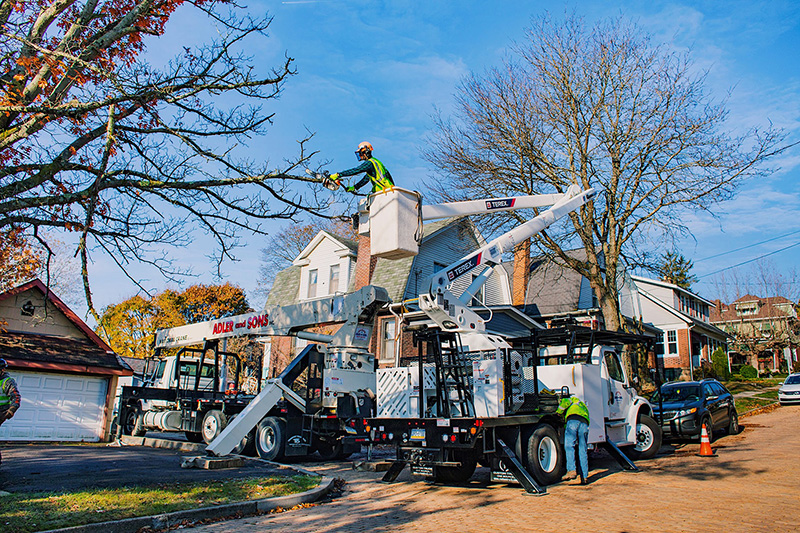As the world becomes more city-oriented, the value of trees in our surroundings cannot be ignored. Trees provide essential benefits, such as boosting air quality, increasing property value, and enhancing mental health. However, looking after these majestic trees requires specialized knowledge and skills, making the position of an arborist progressively vital. For those aspiring to enter the field or simply looking to understand the profession better, having the necessary toolkit is critical.
In this article, we will explore the core tools and insights that every budding arborist should be aware of. From comprehending the science behind tree pruning to recognizing the signs that indicate when to call in a certified arborist, we'll cover all you need you need to explore the world of tree care. Additionally, we'll address the critical role arborists play in urban environments, tree health care, and sustainable practices, equipping you with a comprehensive guide to kickstart your journey in this satisfying profession.
The Importance of Certified Arborists

Hiring a certified arborist is important for ensuring that trees are cared for properly and safely. Certified arborists have completed extensive training and have extensive knowledge in tree biology, health, and maintenance practices. They can determine the health of a tree accurately, making informed recommendations that prioritize both the tree's health and the safety of people and property nearby. tree services cork reduces the risk of poor tree health or hazardous situations caused by improper maintenance.
Alongside their technical skills, certified arborists are devoted to eco-friendly practices that benefit the environment. They appreciate the natural significance of trees in urban settings and work to promote healthy growth, prevent disease, and ensure that trees flourish. This dedication to preservation helps combat the growing urbanization issues faced by many communities, such as air quality deterioration and loss of biodiversity.
Moreover, certified arborists play a crucial role in educating the public about tree care. They provide valuable knowledge on topics such as tree species selection, methods of pruning, and dealing with pests. By imparting their knowledge, certified arborists empower property owners to make wise decisions concerning their trees, ultimately cultivating a deeper appreciation for the vital role trees play in our ecosystems.
Essential Equipment and Strategies
A proficient arborist relies on a variety of specialized tools to carry out their craft effectively. Chainsaws are essential for trimming heavy branches and trunks, while manual tools like pruners and loppers help manage minor limbs and foliage. Climbing gear, such as harnesses and ropes, is essential for securely accessing tall branches and ensuring that arborists can function securely at height. These tools not only enhance efficiency but also support safety during tree maintenance and removal activities.
In furthermore to physical tools, arborists use various techniques that draw on their expertise of tree biology and environmental factors. Tree pruning involves methods tailored to promote health and growth, such as thinning to enhance light penetration or selectively removing dead or diseased wood. Arborists also employ techniques like cabling and bracing to assist weak branches or trunks, effectively extending the life of the tree while minimizing hazards. Knowledge of tree anatomy allows them to evaluate and implement the most effective approach for each distinct situation.
Moreover, the advent of technology has introduced novel methods and tools that arborists utilize to assess tree health and potential hazards. Tools like portable soil testers and tree health assessment software allow for informed decision-making based on data. Understanding these tools’ capabilities and implementations is important for any aspiring arborist, as they play a key role in fostering healthy urban forests and ensuring the safety and longevity of separate trees.
Grasping Tree Care and Upkeep
Proper tree care and maintenance is essential for the health and long-term health of trees. Routine inspections by qualified arborists can identify likely issues such as disease, pest infestations, or weaknesses in structure that could endanger a tree's stability. Experienced arborists utilize their knowledge to recommend proper care practices, including watering, mulching, and nutrient supplementation, ensuring that each tree is given the necessary nutrients for maximum growth.
Pruning is another key aspect of tree maintenance, as it assists to remove dead or sick branches and fosters healthy growth. Arborists understand the science behind pruning techniques and apply them based on the type and health of the tree. Periodic pruning can enhance sunlight penetration and air circulation, minimizing the risk of pests and diseases, while also contouring the tree for aesthetic appeal in gardening.
Additionally, arborists play a significant role during building projects, where tree protection is often neglected. They provide guidance to confirm that trees are protected from destruction during the construction phase. Through thoughtful planning and care, arborists help maintain the environmental and aesthetic value of trees in urban settings, ultimately benefiting the local community and the environment.
